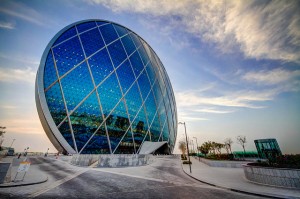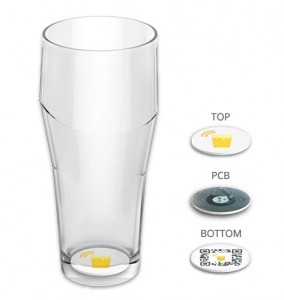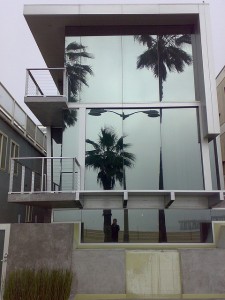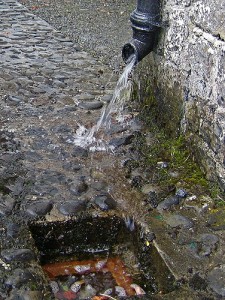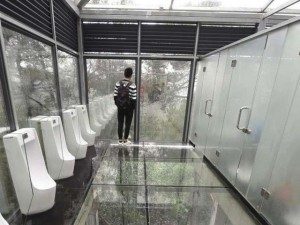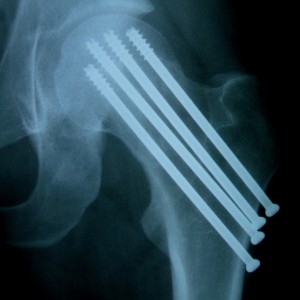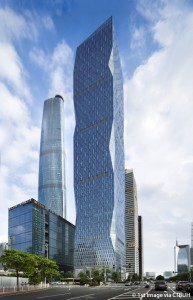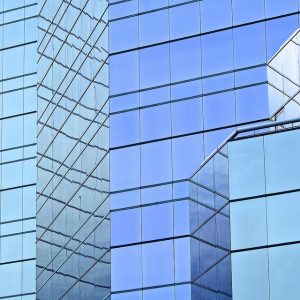Iconic Glass Structures – Aldar Headquarters
This week, we look at the Aldar Headquarters (also spelled Al Dar) in Abu Dhabi in the United Arab Emirates. The circular glass building was completed in 2010 and rises 110 meters above grade. If you’re thinking that the building is a round tower, you’re not thinking about this correctly. It looks more like a glass and steel Oreo standing on its side.
The building features 23 interior floors, but because of its unique design and size, it offers about the same floor space as a 40-story building. The completed structure offers about 62,000 square meters of office space, and the building can hold 120,000 people at one time. The outer façades curve, but they’re actually created from a series of triangular flat glass pieces. The façades face east and west to allow sunlight to penetrate the building.
Despite the significant sun exposure, the building earned a silver LEED certification, and features efficient lighting and water systems. In addition, the building features a vacuum-based waste disposal system. Refuse is vacuum-extracted from the building and deposited in a nearby waste transfer station.
The glass and steel building design was influenced by a fanciful design drafted by French architect Etienne-Louis Boullee in 1784 as an homage to Sir Isaac Newton. The Cenotaph for Newton was never built or attempted. The working design for the Aldar Headquarters was created by MZ Architects. Principle architect Marwan Zgheib said he modeled his design for the building after a clam shell, since Abu Dhabi is heavily influenced by its proximity to the sea.
The building was the first diagrid structure to be built in the UAE. The diagrid construction eliminates the need for support columns. This in turn opens a wide range of options for the building’s interior design.
Glassprimer™ glass paint is a specialized glass coating that bonds permanently to glass surfaces. GlassPrimer also makes a glass surface molecular activator that is designed to work with UV-inkjet glass printing processes. For more information about Glassprimer™ glass paint, please visit the rest of our site. If you’d like to purchase Glassprimer™ glass paint, please visit our online store.
Photo Credit: Ahmed Al Harthi, via Flickr.com

